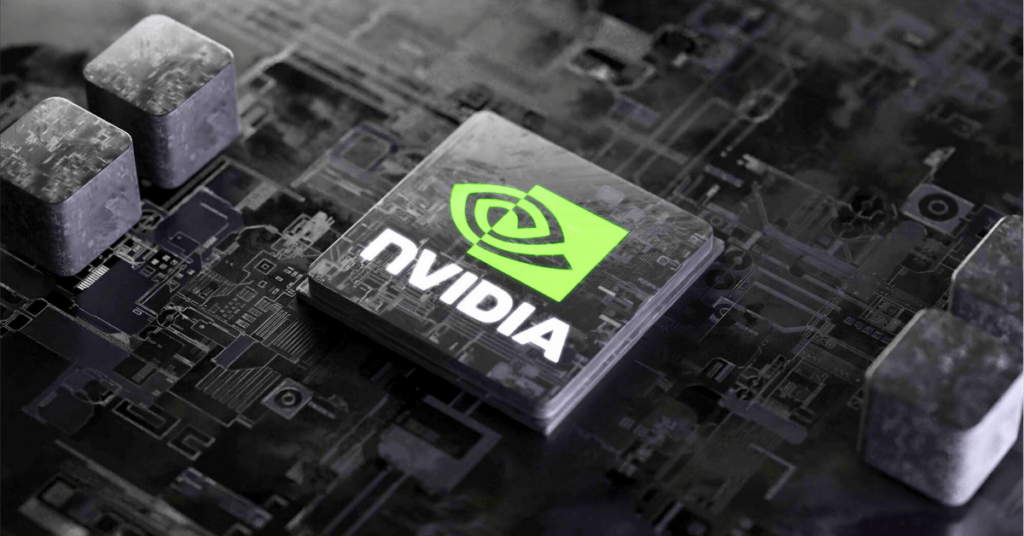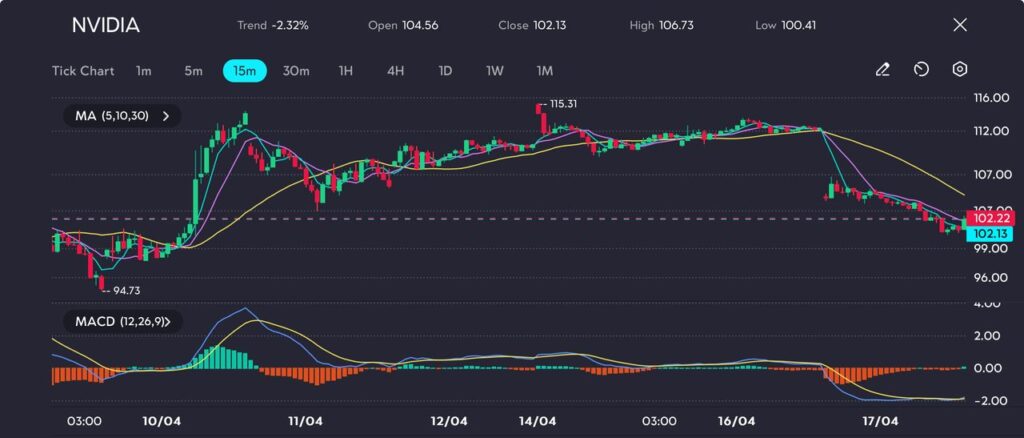
Nvidia’s recent share decline highlights how quickly market sentiment can shift when global trade tensions and policy changes come into play. With fresh US export restrictions targeting AI chip sales to China and rising concerns over tariff-related uncertainty, investors are reassessing the outlook for the semiconductor sector. As pressure mounts across major chipmakers and broader economic risks re-emerge, Nvidia finds itself at the centre of a cautious and increasingly fragile market environment.
Nvidia’s share price continued to slide on Thursday, finishing the session at USD 102.13, marking a 2.32% decline. The drop follows the company’s recent revision of its revenue forecast, prompted by fresh US restrictions on AI chip exports to China.
Nvidia now anticipates a revenue loss of up to USD 5.5 billion in its fiscal first quarter due to these regulatory changes.
The announcement reverberated throughout the global semiconductor sector, with peer ASML also sounding the alarm. The Dutch chipmaker warned that uncertainty surrounding potential Trump-era tariffs could impact the industry through 2025 and 2026, triggering a sharp 6% fall in its share price.
Broader sentiment across chipmakers remains fragile, and attention now turns to TSMC’s upcoming earnings, which will be closely watched as a key indicator of sector health amid escalating trade tensions.
Meanwhile, Federal Reserve Chair Jerome Powell added to investor caution, noting that protectionist policies could dampen economic growth while fuelling inflation, placing the central bank in a difficult position.
Despite Powell’s slightly dovish undertones, fears of stagflation are creeping in—a scenario typically unfavourable for growth stocks, especially high-beta names like Nvidia.
On the 15-minute chart, Nvidia exhibits signs of a momentum shift, indicating a possible short-term correction following a strong rally. After a breakout from the USD 94.73 low, the stock surged to a recent high of USD 115.31, forming a potential swing top.

Since then, price action has weakened, falling below short-term moving averages and settling near USD 102.13.
The MACD indicator reinforces this bearish narrative, with the MACD line crossing below the signal line and the histogram staying negative—pointing to sustained downward momentum.
The divergence between the 5, 10, and 30-period moving averages further highlights growing selling pressure and diminishing bullish strength.
Currently, price is hovering just above a critical support level in the USD 100–USD 101 range. A break below this zone could trigger a decline toward the USD 98–USD 99 area, especially if market sentiment remains cautious.
On the upside, any bounce would need to clear the USD 105–USD 106 resistance to challenge the bearish outlook.
With Nvidia trading below the 30-period moving average and technicals showing signs of fatigue, a retest of the USD 100–USD 98 support region appears likely.
Any recovery would require a positive catalyst, such as encouraging earnings from TSMC or a shift in US trade policy.
In the short term, resistance sits at USD 106–USD 107, while a meaningful rally above USD 110 seems unlikely without a broader turnaround in sentiment.
Click here to open account and start trading.